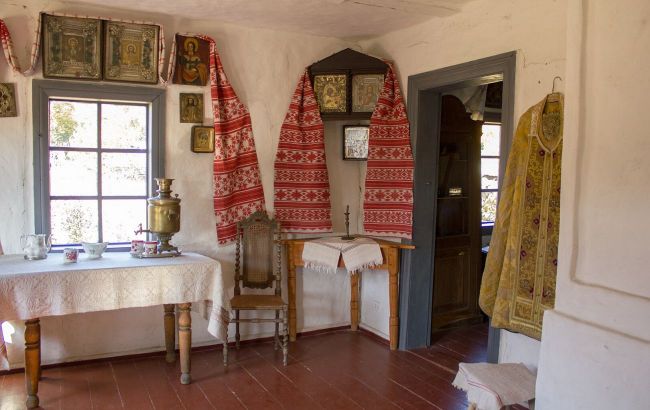Sacred pokut: Ukraine's strongest household protector no one dared disturb
 What the pokut looked like in a Ukrainian house and why it could not be touched (photo: Wikipedia)
What the pokut looked like in a Ukrainian house and why it could not be touched (photo: Wikipedia)
The pokut is an important element of a Ukrainian house that carries deep sacred meaning. The corner with icons, or "pokuttia," was the center of the family's spiritual life, a place of prayer, and a protective charm for the home. Knowledge about its significance and the rules of interacting with it helps us better understand Ukrainian traditions and culture.
What is pokut?
The pokut is a corner in the house traditionally reserved for icons and prayers. It was often located in the east or southeast part of the house, symbolizing spiritual light and blessing. This was where the family turned to God, asking for protection and inspiration for everyday life.
In ancient times, it was also called pokut or pokuttia. Typically, icons, bundles of ears of grain, herbs, and icons of Jesus Christ and the Mother of God hung on the pokut. All of this was framed with a special embroidered towel called a "bozhnyk." The shelf with the bozhnyk and icons served as a kind of altar.
Most often, the pokut in a Ukrainian house was located diagonally across from the stove, where the ends of two benches met.
Why could it not be touched?
The pokut was a sacred place. It was believed that disturbing its space—even accidentally touching it—could bring misfortune or illness.
Therefore, children and outsiders never touched the icons or candles without the elders' permission, and the entire family treated the corner with great respect.
 What the pokut was and what it looked like (photo: Wikipedia)
What the pokut was and what it looked like (photo: Wikipedia)
Most rituals connected to the pokut were Christian. It was there that a newborn child was bathed for the first time, and during christenings, a pot with ritual porridge was placed there.
During weddings, the bride and groom, and their godparents, were seated in the pokut. And during the farewell ritual for the deceased, the body was laid with the head toward the bozhnyk. Promises were also made there.
Symbolism of pokuttia
The icons in the pokut served as spiritual protection. They safeguarded the family from evil and illness. Candles symbolized the light of God’s grace, which illuminated the entire home.
Some families also placed bread, water, or towels there as a sign of happiness and prosperity.
When a person entered the house, they had to cross themselves toward the pokut. It was also where the family stored their most valuable belongings. It was believed to be the safest place in the home.
Pokut today
Modern Ukrainian families still arrange corners with icons, especially in villages and small towns. Today, it is no longer a ritual but rather a way to preserve spiritual values, feel connected to ancestors, and remind oneself of the importance of faith and respect for traditions.
Sometimes icons are hung opposite the entrance, above the bed, or placed on a shelf. But respect for the pokut is still preserved in many families today.
Previously, we explained each element of the traditional Ukrainian costume.
Sources: Institute of Ethnology of the National Academy of Sciences of Ukraine, Ukrainian Institute of National Remembrance, Ethnographic Museum website in Lviv.

